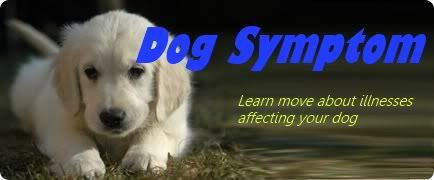Symptoms to look out for in dogs with parvo
- Depression
- Lack of appetite
- Vomiting
- Lethargic
Canine Parvo syndrome is characterised by two different types of symptoms that your dog may experience; cardiac syndrome and diarrhoea syndrome.
Dog love their food, therefore if you witness a sudden loss in appetite in your dog, do take special note. Although loss of appetite is common in other diseases, it does pays to be more careful and have it checked out. It is crucial that parvo sypmtoms are diagnosed at an early stage, so that the dog has the best chance of receiving treatmet and surviving.
Next, we will concentrate on diarrhoea syndrome or ‘enteritis’. Diarrhoea symtoms are the most common form of dog parvo due to infection of the intestines. The disease has an incubation period of 5 to 14 days. Early symptoms are reasonably general as described above. It is crucial that diarrhoea is identified as soon as possible,so that vets can treat your dog for parvo diarrhoea syndrome. The defacation from your dog will resemble fluid and bloody, or grey in colour. As a result of the vomiting and diarrhoea, there is a risk that the dog may quickly become dehydrated. Similar to humans, try to hydrate your dog and give it more water so as to replenish the fluids lost
The other form of parvo is cardiac syndrome (myocarditis) which affects the heart of a dog. This form is more uncommon and exclusively occurs in puppies under 3 months of age, it is more deadly as less symptoms are displayed and the virus will spread extremely quickly in the heart of a puppy. Death can come within hours, it is highly unlikely that the dog will survive, as there is no form of treatment available for it.
If any of these symptoms described above are experienced by your dog, your pet should receive veterinary attention as soon as possible. Do not try to treat the dog yourself.
Facts about Dog Parvo syndrome
Canine parvo virus (CPV), or parvo for short, is an extremely serious disease which occurs in dogs and is highly infectious. It typically occurs among puppies, but may also infect older dogs who may not be vaccinated against it. However, a parvo vaccine that is available recently has helped to reduce the spread of the disease. Puppies less than six months old are most vulnerable to the onslaught of the disease
Parvo seems to occur more commonly in Rottweilers and Doberman Pinschers.These breeds also tend to exhibit higher mortality rates from the disease. Generally, infected dogs are likely to recover in only 50% of the cases, although if they do manage to survive their first four days, the dog is most likely to survive. After contracting it, dogs will develop an immunity to parvo, so there is no risk of catching it a second time.
Parvo can be found in the stools of dogs that are infected. There is also a greater chance of it spreading if dogs are in contact with each other. Since it is so highly infectious, it is very important to stop outbreaks at places like dog shows. Dogs that spend the most of their time in the house are less likely to get infected.
